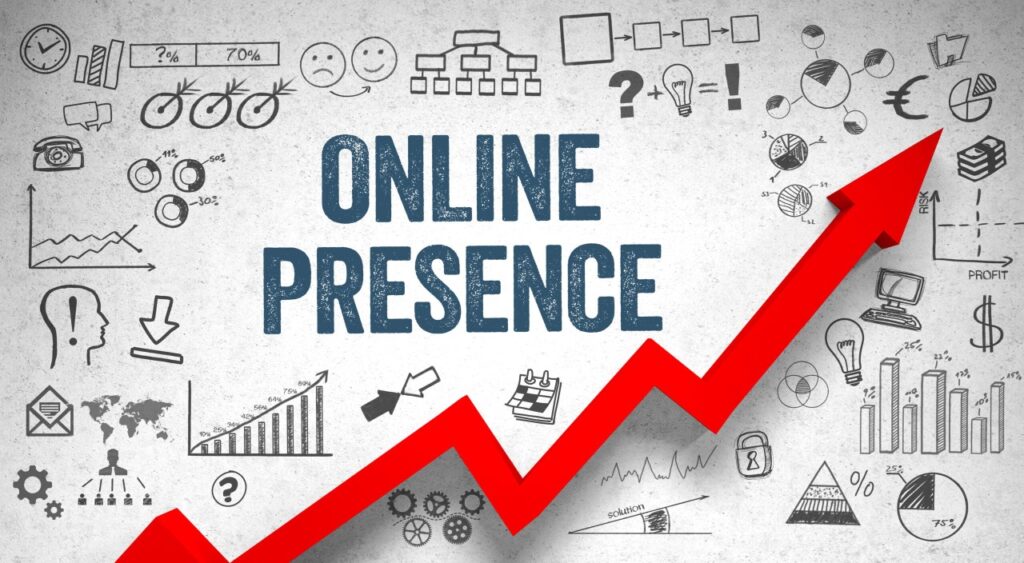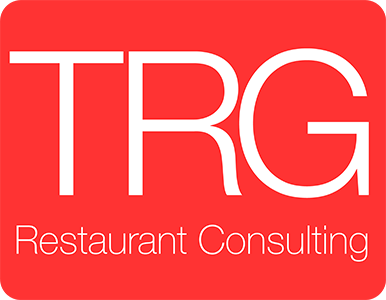Online Reputation for Small Restaurants is critical to attract customers and build trust. Managing how people see your business online can mean the difference between success and struggle.
What is Online Reputation Management for Restaurants

Simple definition of restaurant reputation
Online reputation management for restaurants means actively shaping how people see your restaurant on review sites, social media, and online searches. It involves making sure customers find positive, accurate information.
This includes responding to reviews, correcting details about your business, and keeping your digital presence positive. Doing these simple things can help more people trust and choose your restaurant.
How online reviews shape public perception
Online reviews greatly impact how people view your restaurant. Customers often read online reviews before deciding to eat somewhere. Positive reviews attract customers, while negative reviews can keep people away.
Actively responding to reviews shows you care about customer satisfaction. Good responses can turn negative experiences around and create loyal customers.
Difference between reputation and brand image
Your brand image is how you market your restaurant through logos, menus, and advertisements. Reputation, however, comes from what customers say about your restaurant online and offline.
Managing your reputation involves paying attention to customer feedback and making improvements. Brand image and reputation together help build customer loyalty and trust.
Why Online Reputation Management Matters

How reviews affect customer decisions
Reviews directly affect customer decisions. Over 80% of people read online reviews before choosing a restaurant. Positive reviews encourage visits, while negative reviews can discourage them.
A strong online reputation leads to better customer trust. Customers rely on reviews to decide if a restaurant offers good food and service.
Impact on restaurant profits and growth
Online reputation management impacts your profits. Restaurants with higher star ratings and positive reviews usually attract more customers, increasing sales.
Good reviews help your restaurant grow by building trust. Bad reviews can lead to fewer customers and lower profits, making reputation management essential.
Real-world examples of review influence
A small diner gained popularity after happy customers left positive reviews online. Their reputation quickly improved, leading to increased sales and regular customers.
Another restaurant lost business after negative reviews went viral. Managing your online reviews carefully can protect your restaurant from similar situations.
How to Start Managing Your Restaurant’s Reputation

Check your business information online
Start by checking your business information on sites like Google, Yelp, and Facebook. Incorrect information can frustrate customers, leading to negative reviews.
Update and correct any wrong details like hours, location, and menu. Accurate information helps avoid confusion and builds a reliable online presence.
Make updates to hours, menu, and location
Always update hours, menus, and location information online. Customers trust businesses with clear and accurate details. Outdated information can quickly lead to frustration.
Regular updates show customers that you care about their convenience, increasing their satisfaction and likelihood of positive reviews.
Claim your business on Google and review sites
Claiming your restaurant on platforms like Google and Yelp helps you manage your online presence directly. This lets you respond to reviews, update details, and show you actively care about customer experience.
Claiming your profiles gives you control over your restaurant’s online image and boosts your visibility in searches.
Respond to Reviews the Right Way

Say thank you to positive reviewers
Always thank customers who leave positive reviews. Showing appreciation builds loyalty and encourages repeat visits. Simple, sincere responses create a strong customer connection.
Customers feel valued when their feedback gets noticed, which improves overall customer satisfaction and encourages more positive reviews.
Stay calm when replying to negative reviews
Stay calm when responding to negative reviews. Take a moment to breathe before replying. Responding politely and professionally helps manage your restaurant’s reputation better.
Calm responses can sometimes turn unhappy customers into loyal ones. Showing patience builds trust and can lead to better customer experiences.
Avoid arguing or using emotional responses
Never argue or respond emotionally to negative reviews. This can make your restaurant look unprofessional. Instead, address concerns politely and offer solutions.
Customers appreciate businesses that handle criticism gracefully. Keeping responses professional helps improve your reputation and avoids escalating conflicts.
Show customers you’re listening and improving
Show customers you’re actively listening by addressing their feedback. Mention specific improvements you’re making based on their comments. This helps customers feel valued.
Demonstrating your commitment to improvement boosts customer trust and encourages more positive reviews in the future.
Ask Happy Customers to Leave Reviews
Best times to ask for feedback
Ask customers for reviews right after their meal when they’re most satisfied. Customers are more likely to leave positive feedback when their great experience is fresh in their minds.
You can also request feedback through follow-up emails or texts within a day or two, while their positive feelings remain strong.
Ways to encourage reviews without pressure
Encourage reviews gently without pressuring customers. Simple reminders like table signs or friendly requests from staff can effectively boost online reviews.
Customers appreciate gentle encouragement, which helps maintain a positive relationship and increases your restaurant’s review count.
Use receipts, QR codes, or follow-up emails
Place QR codes on receipts or tables that link directly to review sites. Sending a follow-up email after visits is another easy way to collect customer feedback.
These methods simplify the review process, increasing the likelihood customers will leave positive feedback.
Track and Monitor Reviews Across Platforms

Set up alerts for your restaurant name
Set up alerts using Google Alerts to track when customers mention your restaurant online. Alerts help you quickly respond to new reviews or comments.
Staying updated with alerts ensures you’re always aware of your restaurant’s online reputation.
Use software to collect all reviews in one place
Use review management tools to collect all your reviews in one location. These tools help you quickly respond and manage your restaurant’s reputation effectively.
Software saves time by organizing reviews, allowing quicker responses and better customer engagement.
Watch for fake reviews or review bombing
Keep an eye out for fake or negative reviews designed to harm your reputation. Quickly reporting fake reviews helps maintain your online credibility.
Address fake reviews promptly to protect your restaurant from damage to its reputation.
Promote Good Reviews and Fix Bad Experiences
Share 5-star reviews on social media
Sharing positive reviews on social media boosts your restaurant’s reputation. Highlighting happy customers’ experiences encourages others to visit your establishment.
Regularly posting positive customer testimonials can significantly improve your online credibility.
Learn from low ratings to improve food or service
Use negative feedback as an opportunity to improve your restaurant. Low ratings often highlight areas that need attention, helping you make targeted improvements.
Addressing these issues can greatly enhance overall customer experience and future reviews.
Reach out to unhappy customers with solutions
Reach out directly to unhappy customers with solutions. Personal responses offering remedies can turn dissatisfied customers into loyal supporters.
Customers appreciate genuine efforts to fix problems, improving your reputation and customer retention.
Avoid These Common Mistakes in Reputation Management

Never buy fake reviews
Never purchase fake reviews. It damages your restaurant’s credibility and can lead to penalties from review platforms.
Fake reviews quickly erode customer trust and can harm your restaurant’s long-term success.
Don’t ignore reviews for weeks or months
Respond promptly to reviews. Ignoring feedback makes customers feel neglected and can quickly damage your restaurant’s reputation.
Regularly interacting with reviews shows customers that their experiences matter to you.
Avoid copying and pasting the same reply
Avoid using identical replies for every review. Personalize responses to show genuine care, enhancing customer relationships.
Personal replies increase customer engagement and improve your restaurant’s overall reputation.
Use Reputation Tools Made for Restaurants

Overview of reputation platforms
Tools like Google Alerts, Yelp for Business, and specialized software help manage online reviews. These platforms simplify tracking and responding to customer feedback.
Choosing the right platform improves your restaurant’s online reputation management efficiency.
Benefits of automated review tracking
Automated review tracking saves time, helps respond quicker, and ensures no review goes unnoticed. It keeps your online presence consistent and proactive.
Automation enhances customer satisfaction through timely responses.
How to pick the right software for your size
Choose software based on your restaurant’s size and budget. Smaller restaurants might use simpler tools, while larger ones benefit from comprehensive software.
The right tools help maintain effective and manageable reputation management.
With consistent effort, your restaurant can build a strong, trustworthy online reputation.
In today’s digital age, your restaurant’s online reputation can make or break your business. With diners increasingly relying on online reviews and social media to make dining decisions, managing your digital presence is more crucial than ever. This guide provides a step-by-step approach to help small restaurant owners navigate the world of online reputation management effectively.
Improve Your Service With Customer Feedback

Look for Patterns in Complaints and Compliments
Customer feedback is a goldmine of insights. By analyzing reviews and comments, you can identify recurring themes in both praise and criticism. For instance, if multiple customers mention slow service, it’s a clear sign to address staffing or process issues. Conversely, consistent compliments about a particular dish highlight a strength to promote.
Utilizing review monitoring tools can streamline this process, allowing you to track and categorize feedback efficiently. This proactive approach ensures you’re not just reacting to issues but actively enhancing the customer experience.
Ask Staff to Help with Reputation Goals
Your team plays a pivotal role in shaping your restaurant’s reputation. Encourage staff to engage with customers positively and solicit feedback. Training sessions can equip them with the skills to handle complaints gracefully and turn negative experiences into positive ones.
By involving your staff in reputation management, you foster a culture of accountability and continuous improvement. This collective effort ensures that every team member contributes to building and maintaining a stellar online image.
Use Feedback to Train Your Team Better
Feedback isn’t just for management; it’s a valuable training tool for your staff. Share customer reviews during team meetings to highlight areas of excellence and opportunities for growth. This transparency helps employees understand the direct impact of their actions on customer satisfaction.
Implementing regular training sessions based on feedback ensures that your team evolves with customer expectations. This commitment to growth not only improves service quality but also boosts employee morale and customer loyalty.
Final Thoughts on Reputation Management

Keep Your Online Presence Active
An active online presence signals to customers that your restaurant is engaged and attentive. Regularly update your website and social media platforms with current menus, operating hours, and promotions. Sharing behind-the-scenes content or featuring staff members can humanize your brand and foster a deeper connection with your audience.
Engaging with customers online, whether by responding to comments or sharing user-generated content, demonstrates that you value their input and are part of the community. This ongoing interaction keeps your restaurant top-of-mind and encourages repeat business.
Make Reputation Checks Part of Your Weekly Routine
Consistency is key in reputation management. Set aside time each week to monitor reviews across platforms like Google, Yelp, and TripAdvisor. Respond promptly to both positive and negative feedback, showing customers that you value their opinions.
Regular checks help you stay ahead of potential issues and capitalize on positive trends. This proactive approach ensures that your restaurant’s online image remains strong and reflective of your commitment to excellence.
Build Long-Term Trust with Your Community
Trust is the foundation of customer loyalty. Engage with your local community through events, partnerships, and social initiatives. Highlighting these efforts online showcases your restaurant’s values and dedication to more than just profit.
By building genuine relationships with customers and the community, you create advocates who will support and promote your restaurant. This long-term trust translates into sustained success and a resilient online reputation.







